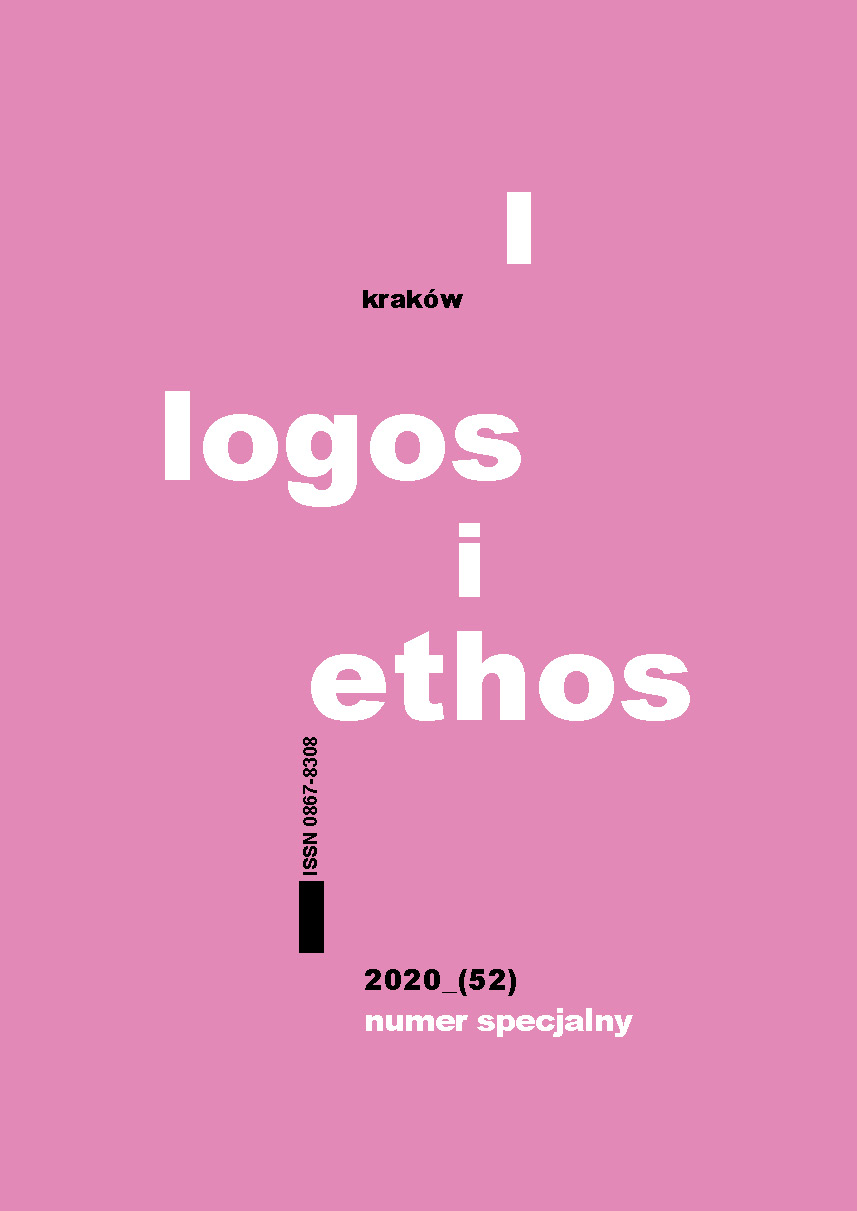Butler S., Darwin among the Machines. (To the Editor of The Press), “The Press (Christchurch, New Zealand)” 1863, p. 179–185. Cave S., Nyrup R., Vold K., Weller A., Motivations and Risks of Machine Ethics, “Proceedings of the IEEE” 107 (2019) no. 3, p. 56
DOI:
https://doi.org/10.15633/lie.3575Keywords:
cyborgization, technoevolution, social imaginarium, cultural narratives, Martin Heidegger, Andy ClarkAbstract
The article is devoted to cultural narratives about cyborgization, in which the relationship between man and cyber machine is described. In this new approach, the machine becomes part of the human body, allows man to improve the quality of life, but also can complement human natural abilities with new (“artificial”) competences. The author of the article analyses the problem of three cultural narratives regarding human cyborgization. These three narrative models are engineering-pragmatic, biological-evolutionary and cultural-humanistic. They constitute the contemporary social imaginarium on the subject of technoevolution and the relationship between man and cyber machine. The author of the article, on the example of Andy Clark’s concept of the natural cyborg, verifies the thesis whether agreement is possible between these narratives. The issue of social acceptance for cyborgization is particularly important in the context of technological progress and questions about the essence of man and technology in the light of new opportunities offered by modern biotechnology and robotics with the view of improving the quality of human life.
References
Butler S., Darwin among the Machines. (To the Editor of The Press), “The Press (Christchurch, New Zealand)” 1863, p. 179–185.
Cave S., Nyrup R., Vold K., Weller A., Motivations and Risks of Machine Ethics, “Proceedings of the IEEE” 107 (2019) no. 3, p. 562–574, doi: 10.1109/JPROC.2018.2865996.
Clark A., Intrinsic content, active memory and the extended mind, “Analysis” 65 (2005) no. 1, p. 1–11, doi: 10.1093/analys/65.1.1.
Clark A., Natural-Born Cyborgs: Minds, Technologies, and the Future of Human Intelligence, Oxford–New York 2003.
Clark A., Supersizing the Mind: Embodiment, Action, and Cognitive Extension, Oxford 2008.
Clark A., Surfing Uncertainty: Prediction, Action, and the Embodied Mind, Oxford 2016.
Clark A., Chalmers D., The extended mind, “Analysis” 58 (1998) no. 1, p. 7–19.
Dourish P., Where the Action Is: The Foundations of Embodied Interaction, Cambridge–London 2001.
Dreyfus H. L., Being-in-the-World: A Commentary on Heidegger’s Being and Time, Cambridge, MA 1991.
Ford M., Rise of the Robots: Technology and the Threat of a Jobless Future, New York 2016.
Fukuyama F., Transhumanism, “Foreign Policy” 2004 no. 144, p. 42–43, doi: 10.2307/4152980.
Garreau J., Radical Evolution: The Promise and Peril of Enhancing Our Minds, Our Bodies – and What It Means to Be Human, New York–London et al. 2005.
Gehlen A., Anthropologische und sozialpsychologische Untersuchungen, Hamburg 1986.
Gehlen A., W kręgu antropologii i psychologii społecznej: studia, tłum. K. Krzemień-Ojak, Warszawa 2001.
Giere R., The problem of agency in scientific distributed cognitive systems, “Journal of Cognition and Culture” 4 (2004) no. 3–4, p. 759–774, doi: 10.1163/1568537042484887.
Heidegger M., Budować, mieszkać, myśleć: eseje wybrane, tłum. K. Michalski, K. Wolicki, Warszawa 1977.
Jonas H., Das Prinzip Verantwortung: Versuch einer Ethik für die technologische Zivilisation, Frankfurt a.M 1979.
Klichowski M., Narodziny cyborgizacji: nowa eugenika, transhumanizm i zmierzch edukacji, Poznań 2014.
Latour B., Visualization and cognition: thinking with eyes and hands, “Knowledge and Society, Studies in the Sociology of Culture Past and Present” 6 (1986), p. 1–40.
Menary R., Neural plasticity, neuronal recycling and niche construction, “Mind & Language” 29 (2014) no. 3, p. 286–303, doi: 10.1111/mila.12051.
More M., Transhumanism: Towards a Futurist Philosophy, “Extropy” (1990) no. 6, p. 6–12.
Muszyński Z., Umysł rozszerzony, poznanie rozszerzone, „nauka rozszerzona”, “Filozofia i Nauka. Studia filozoficzne i interdyscyplinarne” 3 (2015), p. 265–280.
Sandberg A., Bostrom N., Converging cognitive enhancements., “Annals of the New York Academy of Sciences” 1093 (2006) no. 1, p. 201–227, doi: 10.1196/annals.1382.015.
Searle J. R., The Construction of Social Reality, New York 1995.
Sorgner S. L., Beyond Humanism: Reflections on Trans- and Posthumanism, “Journal of Evolution and Technology” 21 (2010) no. 2, p. 149–172.
Stephens G., Beyond Transhumanism, “Futurist” 46 (2012) no. 5, p. 32–44.
Sutton J., Exograms and Interdisciplinarity: History, the Extentented Mind, and the Civilizing Process, in: The Extended Mind, ed. R. Menary, Cambridge–London 2010.
Taylor C., Modern Social Imaginaries, Durham–London 2004.
Tegmark M., Why the brain is probably not a quantum computer, “Information Sciences” 128 (2000) no. 3, p. 155–179, doi: 10.1016/S0020-0255(00)00051-7.
Tennison M. N., Moral transhumanism: The next step, “Journal of Medicine and Philosophy” 37 (2012) no. 4, p. 405–416, doi: 10.1093/jmp/jhs024.
Virtual: Origin and meaning of virtual, https://www.etymonline.com/word/virtual (29.11.2019).
Wojewoda M., Jakość życia jako problem filozoficzny, “Folia Philosophica” 40 (2018), p. 97–115.
Downloads
Published
Issue
Section
License
Authors who publish with this journal agree to the following terms:
- Authors retain the copyright and full publishing rights without restrictions, and grant the journal right of first publication with the work simultaneously licensed under a Creative Commons Attribution 4.0 International License that allows others to share the work with an acknowledgement of the work's authorship and initial publication in this journal.
- Authors are able to enter into separate, additional contractual arrangements for the non-exclusive distribution of the journal's published version of the work (e.g., post it to an institutional repository or publish it in a book), with an acknowledgement of its initial publication in this journal.
- Authors are permitted and encouraged to post their work online (e.g., in institutional repositories or on their website) prior to and during the submission process, as it can lead to productive exchanges, as well as earlier and greater citation of published work (See The Effect of Open Access).

